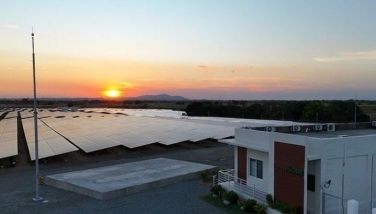Drawn to Capehan
Maayad masulom!
CEBU, Philippines - This is a chant carried by the morning breeze across gurgling Bobonawan River, past a squeaking footbridge that leads to a settlement of the Higaonons, a group of indigenous people.
We are in Barangay Capehan of the Municipality of Libona, Bukidnon (1.5 hours away from Mindanao's gateway in the north: Cagayan de Oro City). Though most of the coffee trees are now gone, on which the village was named after, the aroma of Robusta, Excelsa and Arabica beans still stand out – maayad (it's good) and the experience to be there one moment in time is magana (it's nice).
I have this adulation for tribes. In fact, my online chatting handle is tribal wisdom. I consider it mortal sin to stop learning more on that thing you are passionate about. So when the invitation to visit Capehan for an outreach program cranked up in my e-mail inbox, I replied by being right there where I'm most needed.
It's a delight to have met these Higaonon kids whose brown innocent eyes twinkled at the sight of friendly strangers engrossed in unpacking new slippers, of assorted colors, in the front yard of the Malibo-o Elementary School in Sitio Bontok last August 26.
"Maayad. Magana." These are the first two adjectives that stood out among the many praises the lumads mumbled in a huddle with us, visitors from the lowland, they call the "dumagat."
"If I can only have a pair I'd keep that for Sunday, for the Mass," a youngster said in the vernacular. We learned she is already a mother at 13 years old, and though she already has two kids, the supposed 10 years each child brings to the lines on a mother's face refused to show on hers. To us, she is still a child – young, sweet, naïve. She is still part of the outreach intended for children.
Maayad masulom!
This is a trill conveyed by the mid-morning sun across tall grasses before they were cut, roots pulled out, to give way to a patch for sweet potatoes. In the name of subsistence, planting camote tops is one of the women's chores. But on that day, some of them queued for the mass feeding and distribution of goodies and slippers. They would want to be part of the program too. "Mataum kid. Kauhol kay-on (We go this hungry at the sight of your good food)," the women expressed. However, the children seem to have never stopped from coming: over 150 ranging from months-old to 15 years old.
Barangay chairman Edecio Almerora said that we could not have walked an hour away passing by steep footway at a mountainside to Bontok had the Higaonons thrived in Capehan. But they dislike it living side by side with us dumagats in a community.
"They have never been comfortable with our ways. They are not used to housekeeping. They don't want to be told about how to keep as few children so they can raise them properly," Almerora disclosed.
It shows! The men call themselves "breeders," and the children, despite the availability of water, have long filthy nails, soiled clothes, with runny nose that never seems to dry, and unkempt curly hair. You would wonder if they ever heard of health, sanitation, and personal hygiene. You would also wonder whether it is part of the nature of adaptation for adults to get so accustomed to stink and stench, they wouldn't mind shedding it off first before they copulate!
The children chorused: Maayad masulom! (Good morning!). Then you become oblivious to hygienic concerns and to the smell of heat and sweat emanating from their toffee hair. All you would want to do is give them your one-hundred-percent focus for the three-hour program, something that you are privileged to do, maybe, once in this lifetime! Should I call that love? I don't even know what compelling force was there that vacuumed us to Capehan. But the moment I heard we were connecting with the "lumads," I just jumped off my comfort zone, grabbed my backpack, hurried to the port, and bid Cebu adieu.
Maayad masulom!
This is a warble lugged by the approaching high noon across the richness of Bukidnon's plateau marked by towering Kitanglad range. The potential to continue feeding a nation is promising. The fruits of the earth, the rewards of agriculture are awesome – crates of bananas, pineapples, papayas, tomatoes, durians, lanzones, marangs, aubergines, bell peppers, rambutans, cayenne peppers. Gosh! Bukidnon is so blessed that even libgus (uncultured mushroom) grows just about anywhere the fungus can get a good hold of.
Among the hands that toil for our food basket are those mayad (beautiful) and mayad tungkay (handsome) lumads. I think that's big, maayad reason to further take care of them, being essential in churning our granary, as we hew a path to sustain sustainability. (FREEMAN)
- Latest
- Trending























